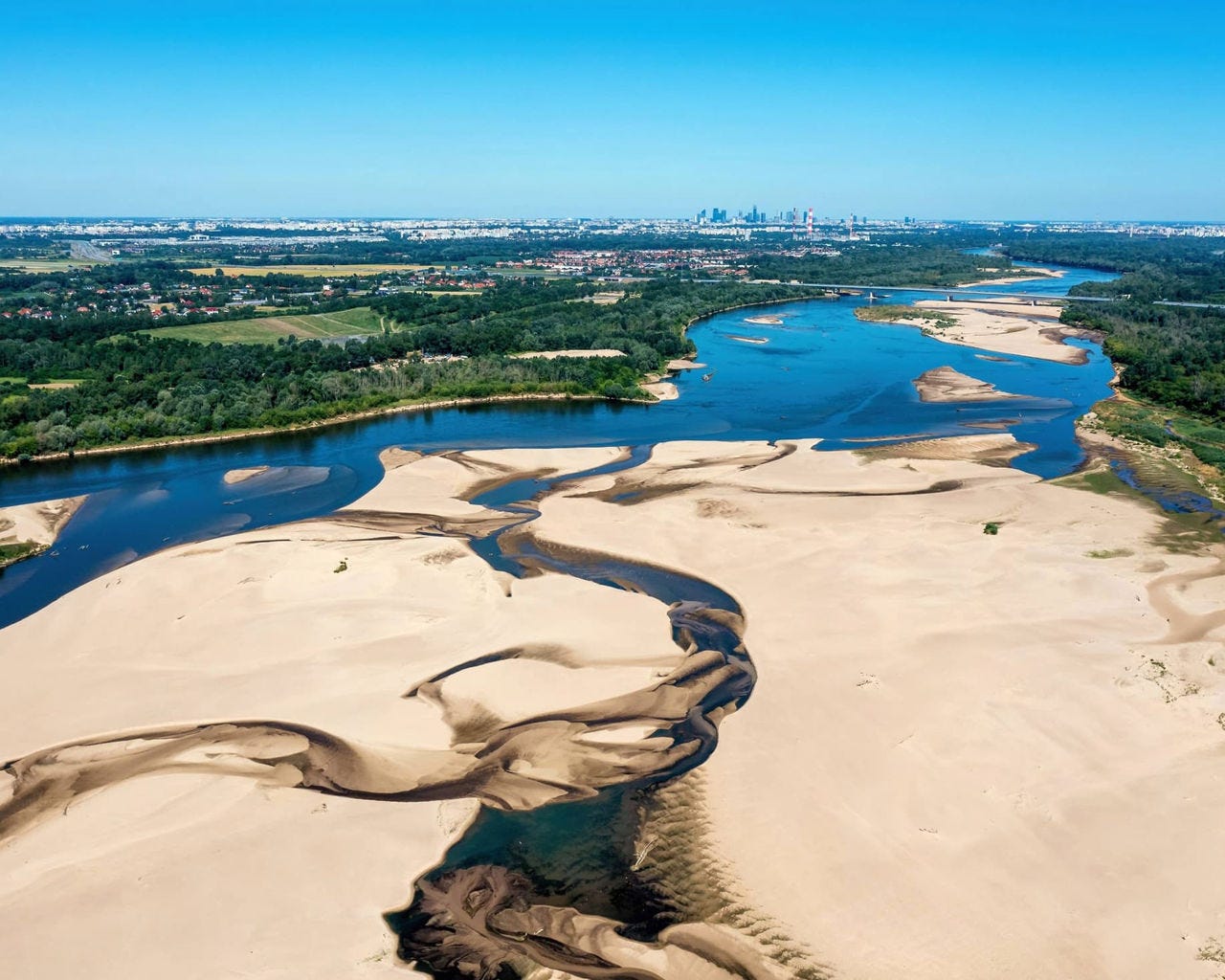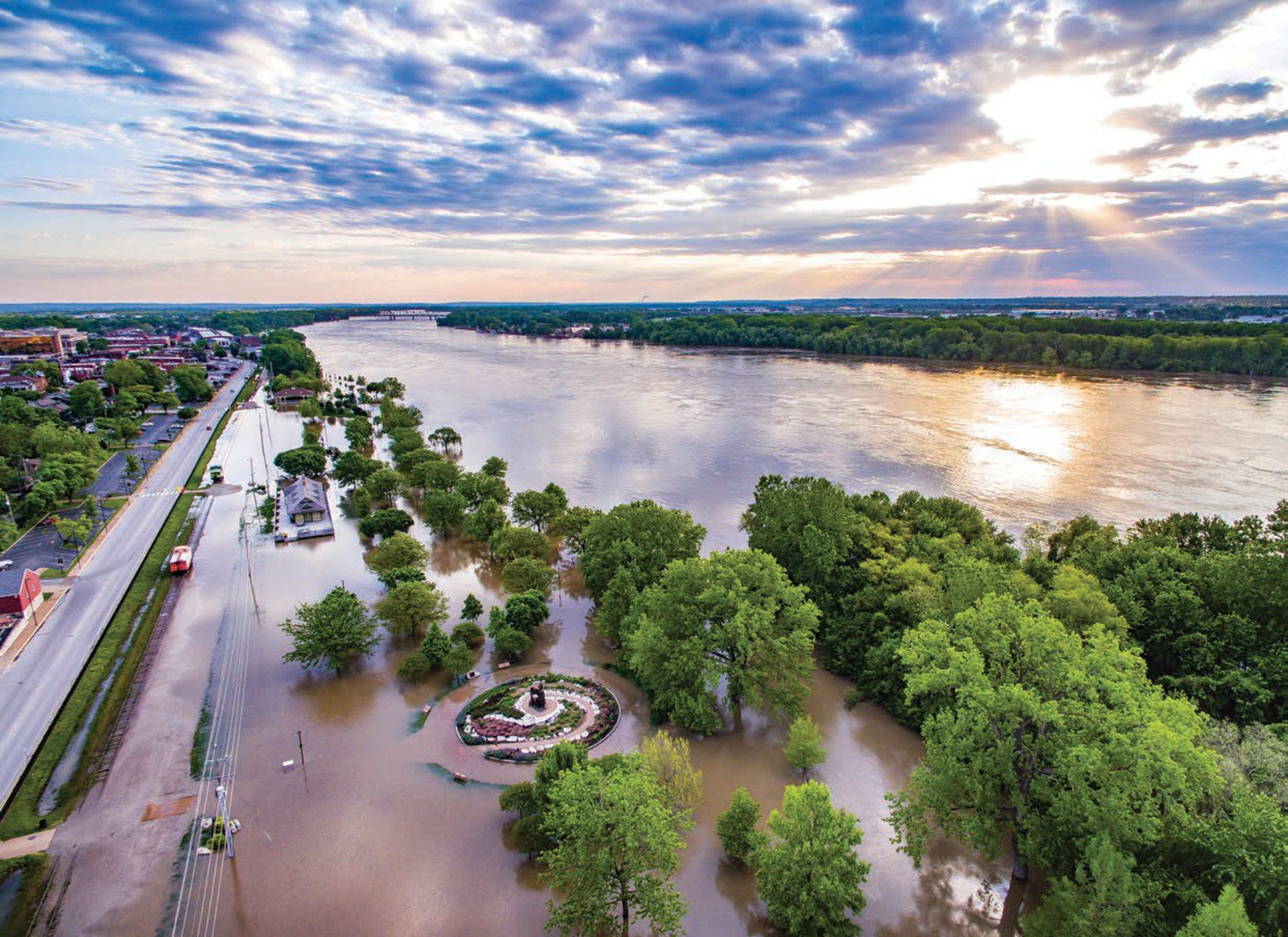17 June marks the World Day to Combat Desertification and Drought, a year after unprecedented droughts plagued regions across the world. In Europe, the Po River basin – Italy’s breadbasket – faced the worst drought in 70 years, after rainfall in early 2022 was about half of the yearly average of the past 30 years and caused an estimated EUR 6 billion in damages to agricultural sector. The low water levels on European rivers reduced hydroelectric and nuclear power production in many countries. Romania’s biggest energy producer generated a third less hydropower in early 2022 than usual. The river Danube flowed at less than half of its typical summer volume, leaving dozens of cargo ships motionless. Low levels on the river Rhine – on which 160 million tons of goods are transported every year – forced vessels to reduce their load and companies to find road or train transport alternatives, disrupting industrial production in Germany’s Ruhr region. Projections also show that 74% of Spain’s territory is at risk of desertification if water management does not dramatically change current trends. At the same time, the Horn of Africa experienced its fifth consecutive dry year and over 20 million people in the region required food and water assistance to fight starvation. Droughts are clearly affecting people’s lives in different regions, with uneven consequences and social inequalities in the distribution of climate impacts.
Climate change is amplifying droughts occurrence and severity
The duration, frequency and severity of droughts has increased since 1950 in many areas of the world. In Europe, the number of areas and people affected by droughts rose by 20% between 1976 and 2006.
The IPCC confirms the increasingly well-established attribution effect of climate change on droughts. Climate change-induced temperature rise was found to have made the 2022 Northern Hemisphere droughts 5 to 20 times more likely and the ongoing drought in eastern Africa at least 100 times more likely.
While 2022 was a harsh year, in the context of climate change, more severe and longer droughts are projected to occur in the future in many regions of the world. Agricultural and ecological droughts that used to occur once every 10 years are projected to occur twice as often – even in (an increasingly unlikely) low warming scenario of 1.5°C in drying regions (Figure). Drought-induced water scarcity is projected to affect up to 3 billion people in 2050 under 3°C global warming scenario and up to 4 billion under 4°C, doubling the currently estimated affected number of people. Furthermore, it is estimated that by 2030, 700 million people will be at risk of being displaced by droughts.
 Source: IPCC 2021 - Climate Change 2021 - The Physical Science Basis, Summary for Policymakers. Note: Drying regions include southern and eastern Australia, Western and Central Europe, the Mediterranean, Madagascar, the Caribbean, as well as large parts of southern Africa, Central America, western and central North America, and northern and southern South America.
Source: IPCC 2021 - Climate Change 2021 - The Physical Science Basis, Summary for Policymakers. Note: Drying regions include southern and eastern Australia, Western and Central Europe, the Mediterranean, Madagascar, the Caribbean, as well as large parts of southern Africa, Central America, western and central North America, and northern and southern South America.
Droughts have significant cascading effects
Droughts have severe impacts on biodiversity. The drought of 2013-2016 in California, United States, led to widespread mortality of pine trees in the Sierra Nevada mountains, which in turn led to a 36% decline in the abundance of bird species as a result of changes in their habitat. Such impacts can become more pronounced with climate change, as more than 60% of forests, croplands and pastures are expected to be exposed to more frequent and severe droughts globally by the end of the century.
Droughts also exacerbate other climate-related risks, such as wildfires. They contribute to drying out vegetation, which increases the flammability of the landscape. The combination of dry conditions in Canada – with moderate to severe drought across the entire country and record-breaking temperatures – have led to an unusually early and intense wildfire season in Canada, with wildfires already having burned 15 times more than the 10-year average.
Building resilience to droughts
Over the last few decades, the international community has pledged their support for a paradigm shift away from focusing on emergency preparedness and response towards more proactive policies to reduce drought risks through longer-term risk reduction measures. Some good practices observed globally give reason to be optimistic:
- Information sharing and capacity building to inform drought resilience strategies
The United States has invested in a Drought Early Warning System (DEWS) and a National Integrated Drought Information System to improve resilience to droughts. Such a system keeps governments and communities aware of preventive measures they can take in advance.
- Raising risk awareness
Cape Town in South Africa suffered from three consecutive years of drought spanning from 2015 to 2018 and was confronted with imminent water shortage – often referred to as the “Day Zero”. From 2017, the city deployed major communication campaigns to reduce water consumption. In 2018, water consumption reduced by almost half compared to 2015 and the inhabitants maintained the water saving gestures they had adopted.
- Fostering nature-based solutions
By 2030, Germany will spend €100 million on renaturation measures, including the creation of natural reservoirs to prevent drought and the construction of water treatment plants. The German Federal Ministry for the Environment has also set up a plan to help municipalities develop sponge city strategies, to foster water infiltration and the use of rainwater.
- Mobilising finance to improve resilience
The United States government launched a historic $13 billion investment plan to improve resilience to the risk of water shortages induced by climate change. Investments will fund wastewater recycling, water transport, storage infrastructure, and techniques to improve water use efficiency. The United States has also committed to preserving 30% of its land and aquifer surfaces by 2030, to protect its major watersheds.
What’s next?
The OECD is working with countries to help them improve their resilience to drought risk under changing climatic conditions by developing integrated drought risk policies. Ongoing analytical work seeks to shed light on the economic, social and environmental consequences of droughts in the future. Through policy dialogues with countries we hope to provide insights on existing gaps and identify ways through which policy design can be improved to address drought risk going forward.






